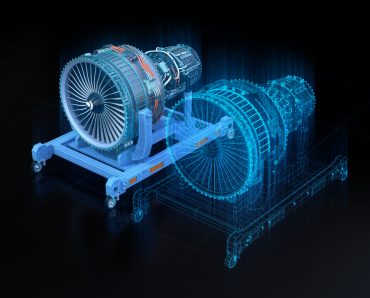
In this week’s real-time analytics news: Accenture is with Mars to modernize its global manufacturing operations with AI, cloud, edge technology, and digital twins.
Keeping pace with news and developments in the real-time analytics market can be a daunting task. Fortunately, we have you covered with a summary of the items our staff comes across each week. And if you prefer it in your inbox, sign up here!
Accenture announced it is working with Mars, the confectionery, food, and pet care products and services company, to transform and modernize its global manufacturing operations with artificial intelligence (AI), cloud, edge technology, and digital twins. Under the new agreement, they will work together to apply digital twin technology and models to the company’s manufacturing facilities globally. This will give Mars factory line operators real-time insights into current and predictive performance. Mars plans to apply them to dozens of use cases over the next three years.
Additionally, over the next two years, Accenture and Mars will create a new cloud platform for manufacturing applications, data, and AI to lay the foundation for its vision of the “Factory of the Future.” The new platform will provide next-generation robotics, AI, and automation capabilities at the edge to make Mars manufacturing operations significantly more efficient and address essential sustainability goals.
Google Cloud announced its Medical Imaging Suite, a new industry solution that makes imaging healthcare data more accessible, interoperable, and useful. The new suite addresses common pain points organizations face in developing AI and machine learning models and uses this to enable data interoperability. Components of the Medical Imaging Suite include:
- Imaging Storage: Cloud Healthcare API, part of the Medical Imaging Suite, allows easy and secure data exchange using the international DICOMweb standard for imaging.
- Imaging Lab: AI-assisted annotation tools from NVIDIA and MONAI help automate the highly manual and repetitive task of labeling medical images, and Google Cloud also offers native integration with any DICOMweb viewer.
- Imaging Datasets and Dashboards: Organizations can use BigQuery and Looker to view and search petabytes of imaging data to perform advanced analytics and create training datasets with zero operational overhead.
- Imaging AI Pipelines: Using Vertex AI on Google Cloud can accelerate the development of AI pipelines to build scalable machine learning models, with 80 percent fewer lines of code required for custom modeling.
- Imaging Deployment: The suite offers flexible options for cloud, on-prem, or edge deployment to allow organizations to meet diverse sovereignty, data security, and privacy requirements—while providing centralized management and policy enforcement with Google Distributed Cloud, enabled by Anthos.
Altair announced the launch of its digital twin solution. Combining Altair’s simulation, high-performance computing (HPC), AI, data analytics, and Internet of Things (IoT) capabilities, companies can apply digital twin technology at any stage of the product lifecycle — from concept through in-service — as part of a cross-functional, enterprise-wide effort that advances collaboration and eliminates departmental silos. Additionally, Altair’s open, vendor-agnostic digital twin solution gives customers the flexibility to run Altair software anywhere – whether on-site, in the cloud, hybrid, or via plug-and-play appliances – and the freedom to choose from a comprehensive toolset through a units-based licensing model called Altair Units.
Materialize announced the early availability of its distributed streaming database, which enables immediate, widespread adoption of real-time data for applications, business functions, and other data products. Materialize delivers in a single platform the separation of storage and compute, strict serializability, active replication, horizontal scalability, and workload isolation — all through a simple SQL interface available as a fully-managed cloud service.
Apollo GraphQL introduced Apollo GraphOS, an end-to-end platform to build, connect, and scale any supergraph. GraphOS is the execution fabric for the supergraph – a runtime that connects backend and frontend systems in a modular way. It offers self-hosted or cloud-hosted routing, so users can choose to operate the supergraph in the cloud and build without complex infrastructure setup or configuration.
ClickHouse announced the launch of ClickHouse Cloud, a fast cloud-based database that simplifies and accelerates insights and analytics for modern digital enterprises. With no infrastructure to manage, ClickHouse Cloud architecture decouples storage and compute and scales automatically to accommodate modern workloads so users do not have to size and tune their clusters to achieve fast query speeds.
ArangoDB announced the GA release of the ArangoGraph Insights Platform. Powered by the ArangoDB graph database, ArangoGraph is a cloud-based graph data and analytics platform that uncovers insights in data that are difficult to obtain with traditional SQL, document, or even other graph databases. It offers a comprehensive set of data management and analytical tools – all united by a query language that natively integrates graph, JSON data, search, and machine learning (ML).
Real-time analytics news in brief
Bonitasoft announced the first release of the Bonita Digital Business Process Management platform, which includes native integration with tools produced by the Process Analytics project. With these tools, users can better customize their visualization of processes and cases for improved process monitoring, giving businesses a deeper understanding of how processes are performing as they run.
Camunda unveiled its latest platform, Camunda Platform 8.1, to help accelerate the development of reusable connectors to orchestrate end-to-end processes across people, systems, and devices. It accomplishes this in the latest release with out-of-the-box connectors for self-managed and SaaS users and a new integration framework that enables teams to build their own reusable connectors.
Decodable announced three new capabilities in the Decodable stream processing platform. The new capabilities include CDC connectors that turn traditional databases into streams of events, ‘multi-way stream joins’ that combine multiple diverse data sources, and change stream processing that hides the complexity of change stream records. Decodable also added features to strengthen the platform’s ease of use and scalability.
Domino Data Lab announced the availability of Domino 5.3, a major update to its enterprise MLOps platform that improves the time-to-value and impact of data science at scale across any cloud or on-premises infrastructure. The latest version introduces a private preview of its Domino Nexus hybrid and multi-cloud capabilities, plus an expanded suite of connectors to simplify and democratize access to critical data sources and new GPU inference capabilities that make it easier to productionize high-value data science projects, including deep learning.
Dynatrace announced the launch of its Grail core technology within the Dynatrace Software Intelligence Platform. Grail unifies observability data as well as security and business data from cloud-native and multi-cloud environments, retaining its context and delivering instant, precise, and cost-efficient AI-powered answers and automation. Initially, Dynatrace is leveraging Grail to power log analytics and management. Going forward, the company expects to extend the technology to other areas.
EvolveWare announced an Agile Business Rules Extraction (Agile BRE) solution on its Intellisys platform. Utilizing intelligent automation, Agile BRE empowers organizations to update business policies and modernize applications concurrently without the hassle of having to freeze code during the process. Enterprises and government agencies can now make changes to existing code at any point in the rules extraction process with minimal impact on work already performed. Agile BRE helps organizations accelerate modernization projects compared to using a manual approach.
Hammerspace introduced new global data environment capabilities to further simplify, automate, and secure access to global data. Those new capabilities include the Hammerspace Metadata Plugin, User Initiated File Protection, and an Automated File Reservation. Hammerspace also announced a new integration with Alchemi Data Elasticsearch. These capabilities enable users to better access, collaborate, and get more value from their files globally from their desktop, regardless of which vendor system the data is stored within.
John Snow Labs announced the launch of two new products: Finance NLP and Legal NLP. The two libraries aim to bring natural language processing to finance and legal domains, respectively. Each comes with a series of new pre-trained models and state-of-the-art algorithms, able to carry out Entity Recognition, Relation Extraction, Assertion Status Detection, Entity Resolution, De-identification, Text Classification, and more.
Keymakr announced the launch of its SaaS platform, Keylabs, which empowers companies of all sizes to leverage its data annotation tools in-house. Keymakr’s video annotation supports object tracking for companies in various industries, such as agriculture, waste management, and automotive. The company also works with retail companies, which deal with data that comes from mobile devices, in-store cameras, logistics, and warehouse cameras.
Komprise announced the Fall 2022 release ofKomprise Intelligent Data Management, which introduces self-service features for line of business (LOB) IT, analytics, and research teams. Now, central IT can authorize departmental end users to interactively monitor usage metrics and data trends, tag and search data and identify datasets for analytics, tiering, and deletion. These new capabilities bridge the long-standing gap between IT’s focus on optimizing storage infrastructure and costs and users’ focus on finding and operating on the right data sets.
Pegasystems announced the latest release of Robot Studio, the robotic process automation (RPA) low-code authoring environment for Pega’s intelligent automation platform. The revamped Robot Studio helps make it even easier for users of any skill level to quickly build robotic automations that help make any business process more efficient. Robot Studio offers a completely new and streamlined UX. It also offers a new set of tools and intuitive workflows that help enterprise users quickly create and deploy bots.
Productiv announced new innovations to its SaaS Intelligence Platform to bring IT, finance, and procurement teams together through the power of data. The aim is to help companies unlock the value of their SaaS portfolios at scale. The enhanced platform helps business leaders to work together and be confident in their decisions and actions, whether that’s gaining visibility into and rightsizing their SaaS investments, managing renewals, or increasing operational efficiency.
Provectus has released its v0.7 update to its Open-Source Data Discovery (ODD) and Observability Platform is a data discovery and observability service, which was built in close collaboration between Provectus and the open-source community. The new release includes the first iteration of role-based access control (RBAC), along with enhancements to the Ingestion API. Both features are crucial to ensuring a more efficient and effective data governance process.
SIOS Technology announced that SIOS LifeKeeper for Linux clustering software has achieved SAP recertification for integration with both SAP NetWeaver and SAP S/4HANA, reaffirming SIOS’ commitment to providing proven technology and deep expertise in High Availability (HA) and Disaster Recovery (DR) for SAP in physical, virtual and cloud environments. To achieve SAP-certified status, SIOS LifeKeeper for Linux software was required to pass a stringent set of qualification procedures based on SAP-endorsed integration technologies.
Partnerships, collaborations, and more
IBM announced it will add Red Hat storage product roadmaps and Red Hat associate teams to the IBM Storage business unit, bringing consistent application and data storage across on-premises infrastructure and cloud. With the move, IBM will integrate the storage technologies from Red Hat OpenShift Data Foundation (ODF) as the foundation for IBM Spectrum Fusion. In addition, IBM intends to offer new Ceph solutions delivering a unified and software-defined storage platform that bridges the architectural divide between the data center and cloud providers.
CelerData announced the availability of an AWS Quick Start for StarRocks Project, the next generation of its real-time analytical database for enterprise analytics. This Quick Start deploys StarRocks on the Amazon Web Services (AWS) Cloud and is for organizations that want a data service layer that supports real-time analytics and high concurrency while simplifying data pipelines. It was developed by CelerData, an AWS Partner, in collaboration with AWS.
HCLTech and Google Cloud announced a significant expansion of their long-standing partnership, with new capabilities and service offerings to expedite enterprise migration to Google Cloud. Specifically, the partnership will enable two new offerings. The new Google Cloud Global Migration and Modernization Factory–within HCLTech Google Cloud Ecosystem Unit–will combine experts, unique IP, migration frameworks, and automation tools to help businesses bring critical workloads into Google Cloud. In addition, a new, dedicated HCLTech Cloud Acceleration Team will further speed customers’ time-to-value with Google Cloud products and solutions by providing architectural expertise.
Imagimob and FotaHub announced a partnership where Imagimob’s tinyML platform will be seamlessly integrated with FotaHub’s cloud-based firmware over-the-air update and provisioning service. This enables developers to use Imagimob AI to create production-ready deep learning tinyML applications, mass deploy those applications, and update the applications in the field using the FotaHub services.
Izuma Networks announced that it has completed an acquisition of Pelion’s Device Management business. With the acquisition, Izuma Networks will focus on the rapidly expanding market for edge computing services. The news has great relevance given the constant changes in the offerings from the major providers, such as the recently announced shutdown of Google’s IoT Core Services product. As such, Izuma Networks will focus on providing a pure-play IoT and Edge service with long-term support, which is cloud provider independent.
Kyndryl and Teradata announced a strategic global partnership to help customers apply AI and data modernization techniques across their environments to accelerate business outcomes and speed time-to-value. The companies are uniting Kyndryl’s Data and AI services and infrastructure management capabilities with Teradata’s high-performance cloud analytics and data platform to help customers modernize and migrate their on-prem data warehouses to the cloud with hyperscaler platforms.
In other Kyndryl news, the company announced plans with Microsoft to expand the reach and impact of their global strategic partnership by helping customers expand and increase access to mainframe data. Kyndryl will use its expertise to create data pipes that enable connections between the mainframe, including its zCloud platform, and the Microsoft cloud, making it easier for customers to move their mainframe data to the cloud. Customers will have a holistic view of their data and can take advantage of machine learning, AI, analytics, and reporting, and will be able to leverage low code/no code applications with Microsoft Power Platform.
NLP Logix announced it has partnered with Databricks to drive business value by unifying data and artificial intelligence (AI). Together, the Databricks advanced data lakehouse platform unifies an organization’s data assets into a single environment where the data science team at NLP Logix can quickly develop and deploy machine learning models onto the Lakehouse Platform.
Ocient announced that the Ocient Hyperscale Data Warehouse is generally available in AWS Marketplace, allowing customers may engage directly with Ocient in the marketplace. With Ocient, AWS customers can harness the performance at scale of Ocient’s Compute Adjacent Storage Architecture (CASA) optimized for nonvolatile memory express (NVMe) solid-state drives (SSDs), high-core-count processors, and 100GB networking.
Qualys announced it has acquired the assets of Blue Hexagon. This brings AI/machine learning (AI/ML) to the Qualys Cloud Platform to help convert petabytes of highly integrated data into meaningful insights for customers. The acquisition will enable Qualys to leverage its Cloud Platform and its more than 10 trillion data points to uncover behavior patterns, including active vulnerability exploitation, identification of advanced network threats, and adaptive risk mitigation across all assets and applications.
ServiceNow announced it has signed an agreement to acquire observability and log management innovator Era Software. Following ServiceNow’s acquisition of Lightstep in 2021, Era Software will help provide customers with a unified observability solution at scale. Customers will be able to gather actionable insights that deliver value across the business, all within a single solution purpose-built for the era of digital business.
If your company has real-time analytics news, send your announcements to ssalamone@rtinsights.com.
In case you missed it, here are our most recent previous weekly real-time analytics news roundups:






























